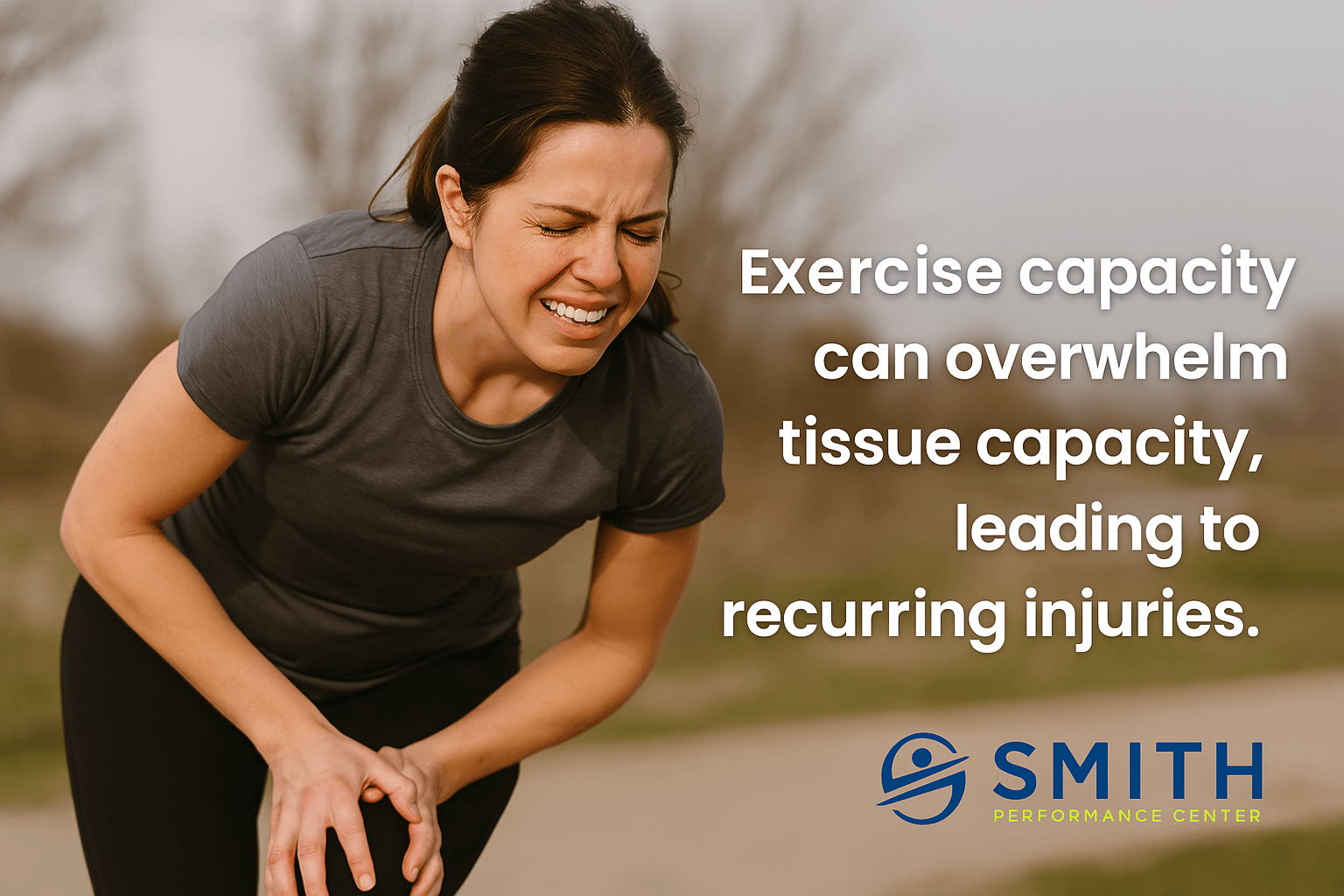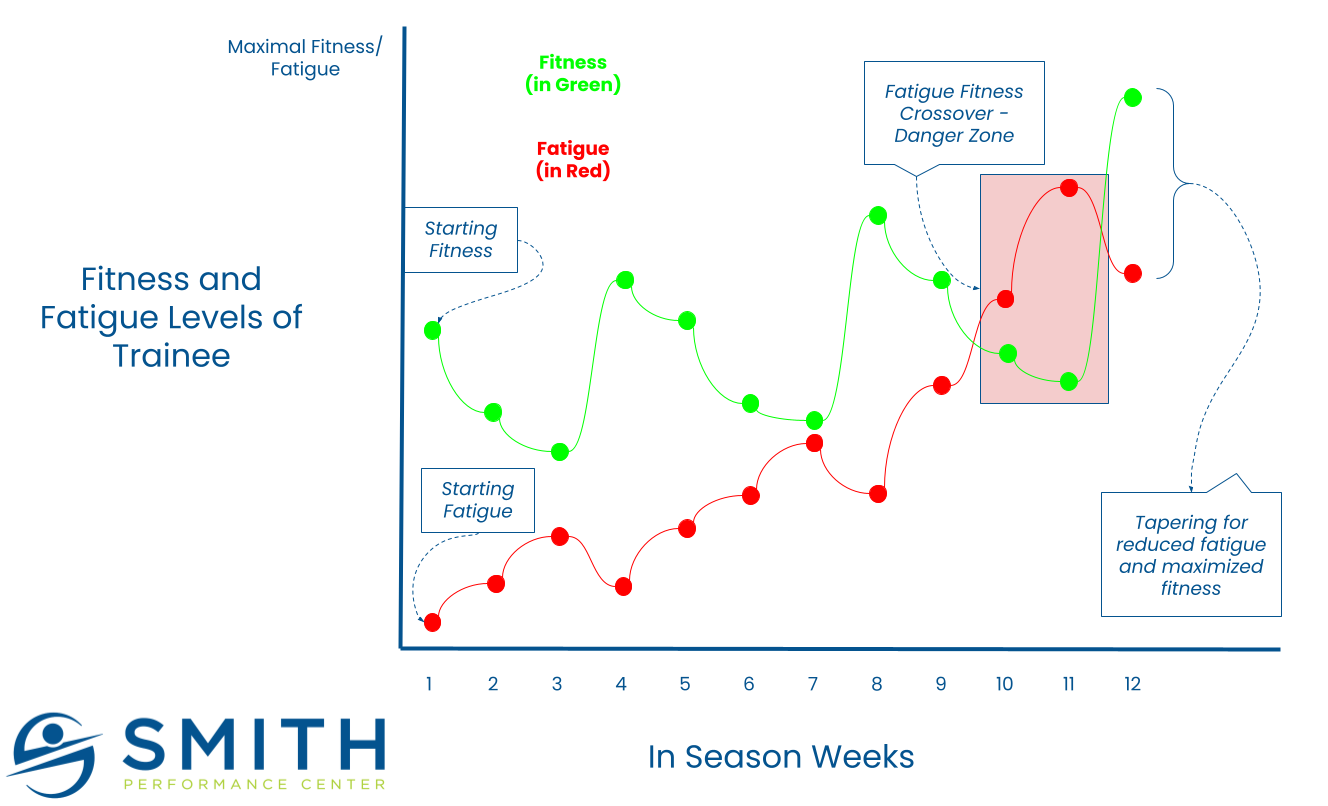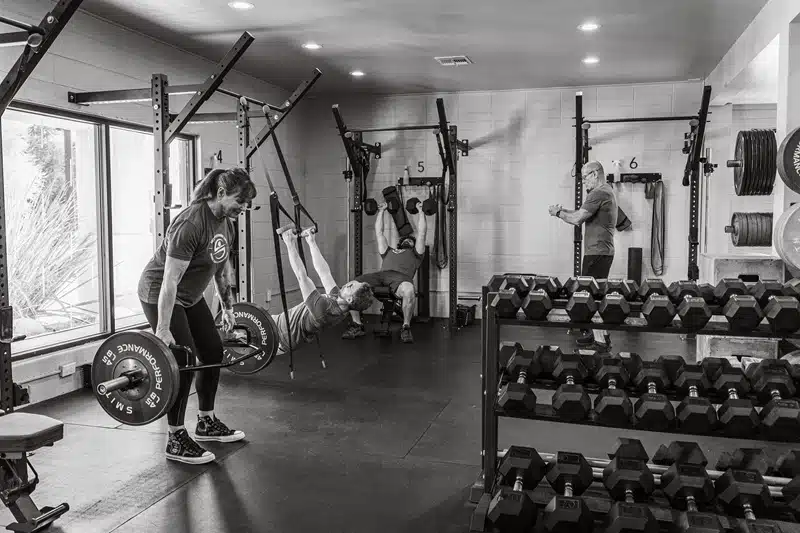Welcome to the transition zone—phase 3 to phase 4—at Smith Performance Center. This shift marks an important move from rehabilitation to performance. We’re committed to ensuring that our community doesn’t get stuck in a permanent rehab mindset. The switch from rehab mode to peak performance mode can pose challenges, demanding careful consideration and expert guidance.
Phase 3 is all about building up tissue capacity, gradually ramping up activity levels, and prioritizing overall well-being. It involves strengthening muscles, alleviating muscle inhibition, closely monitoring responses to increased activity, and addressing any lingering issues stemming from previous inactivity. Essentially, it’s about improving tissue capacity while laying down a solid foundation for what comes next.
In contrast, phase 4 signifies a fresh chapter, with a focus on establishing a consistent exercise routine and raising the bar for performance standards. Our goal here isn’t just to ‘move’ but to instill a long-term commitment to fitness and propel you toward your performance goals. We’re shifting from a rehab mindset to one centered on sustained physical activity.
It’s crucial to understand the distinctions between Phase 3 and Phase 4 because it’s easy to either rush into full-fledged exercise or linger indefinitely in Phase 3, feeling stuck in the cycle of injury recovery. The timing and execution of this transition require a nuanced approach tailored to individual needs. You’ll need to recognize your key signals, navigate your feedback loops, and hone your functional movements. Whether you’re recovering from injury or striving for peak performance, the strategy must align with your unique journey.
What are the differences between Phase 3 and Phase 4?
There are 3 clear differences between phase 3 and phase 4:
- Shift in Goal
- Challenges to overcome change
- Role of the physical therapist and coach change
Let’s review each.
Shift in Goal
The change in goal lies in the emphasis on either tissue capacity or exercise capacity.
Training tissue capacity involves nurturing a positive response for injured tissues. This meticulous approach requires constant attention to your body’s feedback, ensuring that exercises are executed within the boundaries of tissue tolerance. Monitoring tissue tolerance involves observing changes in pain, feedback loops, and key signs, enabling us to tailor the exercise regimen accordingly. Beyond selecting appropriate loading levels based on your response, we address contributing factors such as atrophy, sensory dysfunction, balance, motor control, pain, and movement competence. This comprehensive approach incorporates physical therapy recommendations into home plans and PT additions while prioritizing recovery. The use of artificial stabilization tools may be necessary to support training endeavors, all with the overarching goal of fostering tissue adaptation and mitigating the risk of exacerbating underlying issues. The goal of tissue capacity training is to ensure you feel good during exercise, after workouts, and as you increase volume.
Conversely, training exercise capacity assumes a foundation of structural integrity, free from underlying injuries. Here, the emphasis shifts towards progressively challenging the body within its functional limits. Through strategic loading, scheduled deloads, and a variety of exercises, individuals strive to perform at a higher level. The goal for exercise capacity development is building greater strength, movement competence, and confidence in your body.
Challenges to overcome change
In phase 3, distinct challenges must be addressed:
- Low tissue capacity: The injured tissue may not tolerate loading well, necessitating careful monitoring and adjustment of exercise intensity.
- Consequences of deconditioning: Loss of fitness due to injury-induced inactivity requires gradual reconditioning to regain strength and endurance.
- Mismatch in exercise capacity: There can be a significant disparity between perceived effort and the actual capability of the injured tissue, requiring realistic expectations and patience.
- Impatience to return: Unrealistic expectations for a quick return to normal exercise levels may jeopardize the healing process and prolong recovery.
- Invisible triggers: Factors that exacerbate the injury may not be immediately apparent, necessitating thorough assessment and management.
- Flare-ups: Sudden increases in exercise activity or intensity, progression in daily activities, or deviations from the prescribed home plan can trigger significant setbacks.
- Contributing factors: Underlying issues driving the injury need to be identified and addressed to prevent recurrence.
- Changes in feedback loop: As healing progresses, the feedback loop may become less distinct and delayed, requiring heightened awareness and adaptability.
- Cumulative overload: Gradual accumulation of stress on the healing tissue must be managed to prevent overuse injuries and setbacks.
In phase 4, the focus shifts, and distinct challenges arise:
- Execution of workouts: It’s about executing workouts effectively, ensuring proper form, and maximizing the benefits of each session.
- Sustained motivation: Maintaining consistent motivation to adhere to the workout routine and stay committed to long-term fitness goals can be challenging.
- Skill development: Mastering foundational movements and techniques is essential for progressing safely and effectively.
- Overcoming exercise barriers: Identifying and addressing obstacles that hinder workout consistency and progress is crucial.
- Accountability: Holding oneself accountable to show up for workouts and follow through with the planned routine is essential.
- Boredom: Keeping workouts engaging and varied to prevent monotony and maintain interest over the long term.
- Compelling goals: Establishing clear, meaningful goals that provide direction and motivation for continued progress.
- Long-term mindset: Transitioning from a short-term boot camp mindset to embracing exercise as a lifelong commitment for sustained health and well-being.
- Progressive overload: Learning to gradually increase exercise intensity and load over time to continue challenging the body and promoting adaptation.
Role of Physical Therapist and Coach
At Smith Performance Center, we believe in a collaborative team approach to support our patients and members on their journey to health. This commitment extends to dedicating 5 hours per week as a team to meetings aimed at examining the challenges our community faces and ensuring that we have the right team member with the right expertise available at the right time.
In phase 3, the physical therapist plays a central role in guiding rehabilitation efforts, but as progress is made and symptoms improve, the coach begins to actively participate in guiding exercise sessions. By this stage, we’ve established a clear diagnosis, witnessed significant improvements in symptoms, and equipped you with the tools to self-manage pain and address contributing factors. As the need for manual therapy diminishes and the frequency of full visits decreases, the physical therapist transitions to a supportive role, providing check-ins through brief phone calls or in-person sessions.
During phase 3, the focus shifts towards enhancing tissue capacity, with the coach taking on the role of quarterback, utilizing the strategies and techniques developed during physical therapy sessions. If any setbacks occur, the physical therapist steps back into the driver’s seat to manage the situation effectively.
As the transition to phase 4 unfolds, the role of the physical therapist undergoes a complete transformation. The physical therapist conducts a discharge, signifying that formal therapy is no longer necessary. Instead, they oversee the open clinic, a service designed for our members to address any recurring or new injuries promptly through our programming. Meanwhile, the coaching staff takes the lead position, focusing on overcoming the challenges outlined earlier and supporting members in achieving their long-term fitness goals.
Knowing your phase matters
The journey from phase 3 to phase 4 at Smith Performance Center is all about transitioning from rehab mode to peak performance mode. It’s about empowering individuals to move beyond simply fixing things to embracing a lifestyle of movement and vitality. With our team approach, combining the expertise of physical therapists and coaches, we’re here to support you every step of the way.
So, whether you’re working on building up tissue capacity or tackling new exercise challenges, we’ve got your back. Together, our aim isn’t just to help you feel better; it’s to help you live better.



